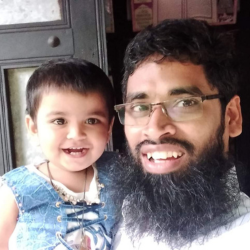Here’s a detailed explanation of the Java Spring Boot HTTP request lifecycle:
1. Client Request
The lifecycle starts when a client (such as a web browser or a REST client) sends an HTTP request to the Spring Boot application.
2. Web Server
The request reaches the web server (such as Apache Tomcat, which is embedded in Spring Boot applications) that forwards it to the Spring Boot application.
3. Servlet Container
The web server passes the request to the servlet container. In Spring Boot, this is handled by the DispatcherServlet.
4. DispatcherServlet Initialization
Configuration: DispatcherServlet is initialized based on the configuration specified in the application.
Handler Mapping: It uses handler mappings to determine which controller method should handle the request.
5. Middleware Processing (Filters & Interceptors)
Filters: The request first goes through a series of filters (such as authentication filters) before reaching the servlet.
Interceptors: After filters, interceptors can be used to perform operations both before and after the request is handled by a controller.
6. Controller Handler Mapping
DispatcherServlet uses handler mappings to find the appropriate controller and its method to handle the incoming request.
7. Controller Method Execution
Request Handling: The matched controller method is executed. This method contains the business logic to process the request.
Service Layer: The controller method may call services in the service layer to perform business operations.
8. View Resolution
Response Creation: The controller method prepares the response data.
View Resolver: If the controller method returns a view (like a Thymeleaf template), the view resolver will resolve the view to be rendered.
9. Middleware Processing (Response)
Interceptors: After the controller has generated a response, interceptors can modify the response before it is sent back to the client.
Filters: The response passes back through the filters before leaving the application.
10. Return Response
DispatcherServlet: The final response is processed by DispatcherServlet and sent back to the servlet container.
Web Server: The servlet container sends the HTTP response back to the client via the web server.
Diagram:
Client Request -> Web Server -> Servlet Container -> DispatcherServlet Initialization -> Middleware (Filters & Interceptors) -> Controller Handler Mapping -> Controller Method Execution -> View Resolution -> Middleware (Response Filters & Interceptors) -> DispatcherServlet -> Web Server -> Client Response
Example:
Consider a request to fetch a list of books in a library system:
Client Request: A GET request to http://example.com/books.
URL Routing: The request is routed based on the URL mapping in the controller.
@RestController
@RequestMapping("/books")
public class BookController {
@GetMapping
public List<Book> getAllBooks() {
return bookService.findAll();
}
}
Filters & Interceptors: The request passes through filters (e.g., authentication filter) and interceptors.
Controller Method Execution: The getAllBooks method is called.
public List<Book> findAll() {
return bookRepository.findAll();
}
View Resolution: In this case, since the method returns a List<Book>, the response is serialized into JSON.
Response Middleware: The response can be modified by response interceptors if needed.
Return Response: The response is sent back to the client, containing the list of books in JSON format.
This lifecycle ensures that each step, from request to response, is handled efficiently and allows for various operations to be performed on the request and response data. Let me know if you want to explore any specific part further!
